Final Fantasy 16 review: "Stands alongside the series' greats"
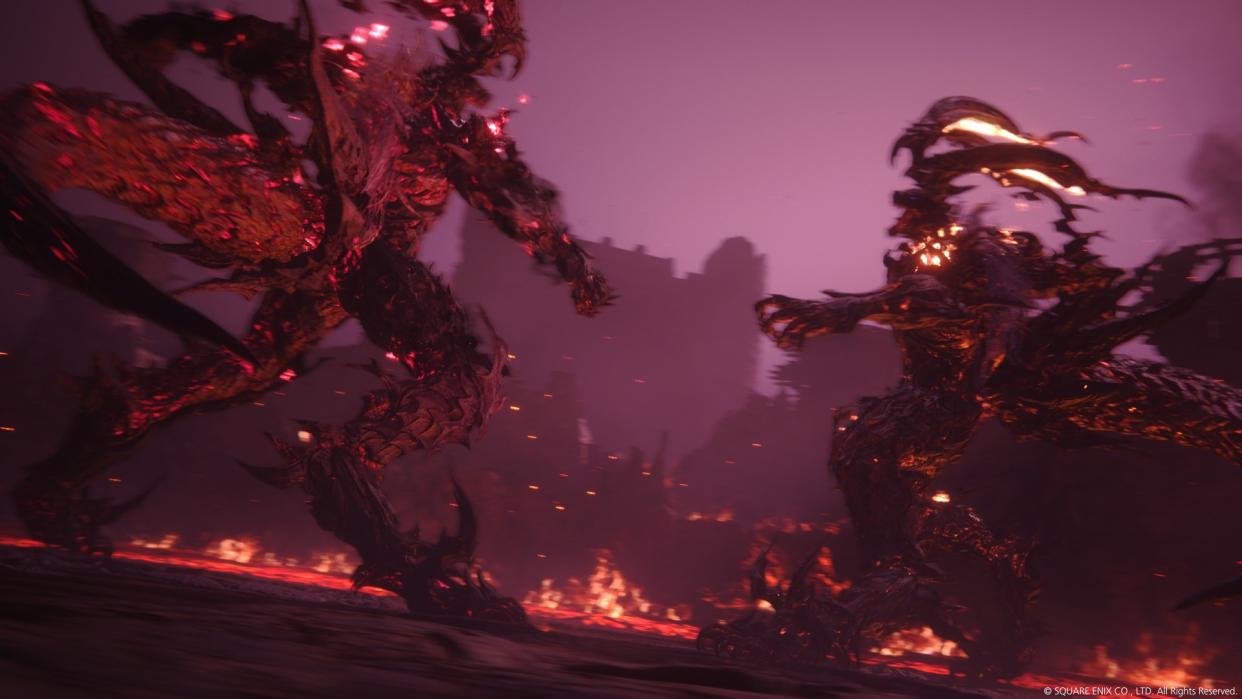
Past the pure medieval fantasy, Final Fantasy 16 recaptures a more precious magic from the series' earlier history – a freeness to reinvent so that you might create something to better capture the moment. Fewer series lend themselves better to that idea than Final Fantasy. Save for props and crystal motifs providing subtle-yet-recognisable continuity, each new installment freely introduces worlds filled with fresh ideas and a new cast of characters.
The series began through creator Hironobu Sakaguchi's desire to create an RPG akin to seminal fantasy classics such as Ultima and Wizardry, with Dungeons and Dragons then inspiring the idea to offer main characters that you can imagine the backstories for. The medieval set dressing and ambiguous protagonists defining the earlier games gradually gave way, with the subtler steampunk aesthetics and more distinctive cast of Final Fantasy 6 foreshadowing the series' biggest shake-up yet. Final Fantasy 7 doubled down on what FF6 put before it, making the generational leap to the PlayStation with an ambiguously futuristic dystopia filled by Square Enix's most-beloved party of misfits.
With success, however, comes weight. Each Final Fantasy game means something to someone, so pressure builds to replicate what people love, turning past design decisions into something more akin to rules over what Final Fantasy should be. Rules that Final Fantasy 16 seeks to break.
A realm reborn

Final Fantasy 16 is a tale of rebelling against the status quo so that you might "live how you choose." Gone is the machinery born of magic that's been prominent since Final Fantasy 6, and in its place is a more concentrated medieval fantasy reminiscent of where the series first began. While the framing of this adventure may feel like a bit of a throwback, the action is anything but.
Hack-and-slash action akin to combat director Ryota Suzuki's time on Devil May Cry replaces the turn-based duels that Final Fantasy has stuck with for over 35 years. How to modernize the beloved battle system has long been a question that developer Square Enix has sought to answer, one which Final Fantasy 16 simply forgoes. It may be unthinkable to ditch something that's seen by many as so intrinsic to the spirit of the series, though it was likely also unthinkable at one point for Square to ditch a medieval setting for sci-fi dystopia, or make the transition from 2D to 3D. Like the series' seventh entry, Final Fantasy 16 gets away with such sweeping changes to tradition by going all-in on the shift.
You play as Clive Rosfield, a noble not born a child of fate but rather their older brother. Each kingdom forms around a grand crystal that fuels their way of life, protected by a summon – called Eikons here – controlled by their dominant who is ever-present on the battlefield as a symbol to their people. Clive's brother Joshua inherits the eikon of the Phoenix over him, so Clive means to act as his shield – shouldering the lofty responsibility of protecting them from danger.
The earlier portions of Final Fantasy 16 are about getting to grips with your moveset so you may do just that. Clive can dodge around foes and whittle down their stamina until they're vulnerable to greater damage. A sense of flair comes from the blessing of the Phoenix, which grants a fiery gap closer and grander moves. As Final Fantasy 16 progresses, you obtain fractions of other Eikon's power that add new ideas to how you might take an enemy down. Using the Phoenix's blessing to close in on a foe and knock them into the air before freely swapping to Garuda's power to pull them back down to earth proved an early favorite during my time with the game.
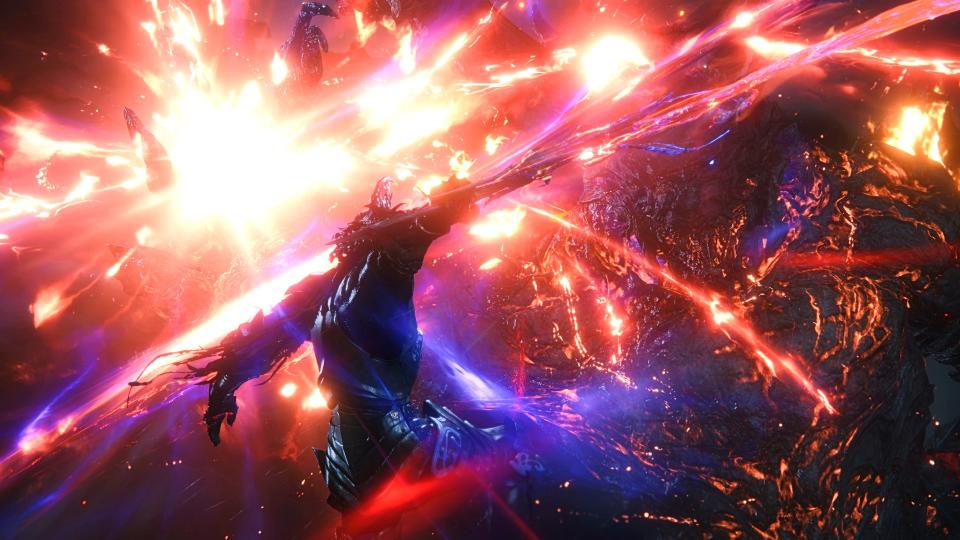
Eikonic
Final Fantasy 16's story and tone succeed in supporting the spectacle on show. Set-piece battles between eikons – where you're able to take direct control of some of Final Fantasy's most famous summons – are one of the many new additions to FF16, although they can be a slow burn. New abilities are learnt throughout the game to make it more interesting, though the biggest benefit they receive is a sense of drama the story builds. Be it Clive’s shot at redemption or the pummeling of a foe who had it commin’, each goliath battle is memorable.
Devil May Cry set a high bar for this style of combat, where each enemy is an opportunity for self-expression and the execution of stylish combos, although Square Enix does come perilously close to reaching it. Each Eikon succeeds in offering a distinctive playstyle, and eventually learning a Devil Trigger-style Limit Break adds some further flair to proceedings as you chip away at a foe's stamina bar that little bit quicker. Still, as great as the action combat can feel in Final Fantasy 16, it could all flow together just a little bit better.
What does win out is the combat's approachability. The design decision to make Final Fantasy 16 an action-RPG will likely open the door to those with a passing interest in the series. However, accessories which can be equipped throughout ensure that every player will have the opportunity to feel eikonic. One guarantees that dodges will always land, while another allows intricate combos to be pulled off at the press of one button. If you fancy a greater challenge, more convenient accessories expand the dodge window without ensuring you'll nail it instantly or cast a healing potion when health gets low.
The visual design of certain moves, however, can make seeing the screen in combat, cutscenes, and action sequences challenging. One of Garuda’s abilities whips foes into a tornado you can’t see through, leading to a lull in combat as you fire magic into it in hopes of hitting a target. The visuals of set-piece abilities clouding vision also extend to the cinematic breaks in fights. A fight against Bahamut features a Gundam-like laser show, whereas sparks fly in a fight with Titan not unlike Dragon Ball. The visual information overload serves the spectacle Final Fantasy 16 seeks to create, though the cost to some might be discomfort.
Back to basics
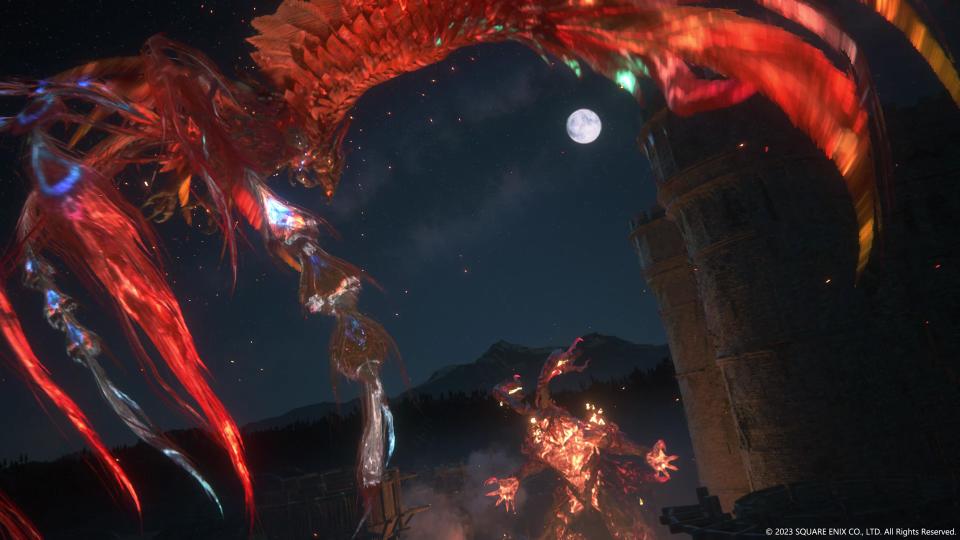
If Final Fantasy 16's combat is what breaks new ground for the series, it's the story that shows an endearing fondness for its roots. The world of Valisthea returns to medieval set dressing reminiscent of earlier series entries, albeit imbued with the developer's love of other works like Game of Thrones. Empires and Kingdoms collide in bloody conflict while those in power gather behind the slaughter to forge uneasy alliances and get into bed with whoever might make that happen.
Plenty has been made of Final Fantasy 16 wearing its heart on its sleeve regarding its inspiration, although there's plenty to set this adventure apart from those we witnessed in Westeros. While both works feature an otherworldly evil beyond the scope of conflict, Game of Thrones is a battle of succession whereas Final Fantasy 16 is one to replenish dwindling resources. Despite sharing a similar medieval setting, the worlds of Valisthea and Westeros feel different enough in the places where it truly matters.
"There's plenty to set this adventure apart from those we witnessed in Westeros"
The more thought-provoking parallels are with our own world. Strip away the symbolism of the crystals, and you see a realm overly reliant on the resources draining its world of life. The common folk are too impoverished to do anything but rely on those means, and the rich simply don't care as long as their power and wealth are maintained. The themes of environmentalism and class struggle make Valisthea more recognisable, save for the giant yellow birds running around. While the odd feature momentarily reminds me of Game of Thrones – like the world map – I spent more time reflecting on the issues we face ourselves.
Valisthea is no stranger to war, though the conflict that sparks the main narrative is Clive's failure to fulfill his duty to his brother in the wake of their homeland's betrayal. The best Final Fantasy games offer protagonists who are both easy to root for and effortlessly badass, and we have that here with Clive. His brooding demeanor and love of the f-word will likely spark comparisons to The Witcher's Geralt of Rivia, though Clive's ambitions and struggles are his own. Clarity over his brother's demise is at the forefront of his mind, though seeing how the world looks down on and treats people like him who can wield magic without a crystal moves him to join a cause seeking to free them. Naturally, it leads to something larger.
Choice bits of dialogue stray to the side of cheesy at times, but not without maintaining an endearing quality present all throughout Final Fantasy 16. There's greater work for approachability here, too. The central hub area you return to throughout the game is inhabited by two characters dedicated to recapping and explaining the world's lore. They're not needed to understand what's going on, necessarily, although they do provide a neat resource for players who may have been put off by Final Fantasy's narrative complexity in the past or those who tend to consume these sprawling RPGs over longer stretches of time.
Back on the road
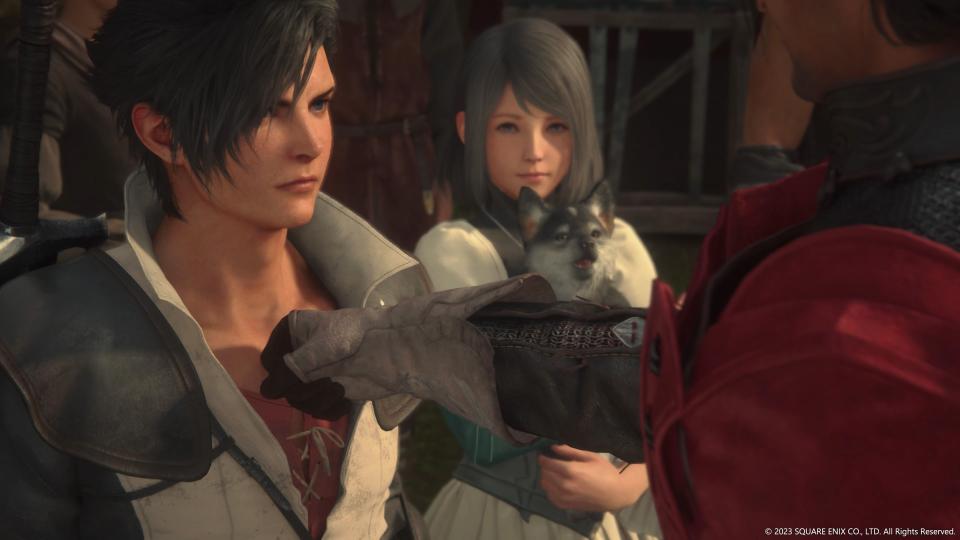
Final Fantasy 16 is similar in its structure to Final Fantasy 15, albeit one that continually builds. You start with the relevant stretch of Clive's teens that influence where he is in the present day, a 20-something mercenary trying to reckon with his past. It's a focused stretch of gameplay mainly intended to show you the ropes of gameplay and explain how we got here narratively. It's not unlike FF15, which saw protagonist Noctis face the betrayal of his own kingdom.
Once we get back to the present day, things open up with a larger second act. Final Fantasy 16 adapts a semi-open world approach, quite a departure from FF15's wholly explorable map. You are, however, free to wander around and aid the locals through sidequests. While Noctis was free to pitch his camp wherever he pleases, Clive has a home base that acts as a central hub to return to – somewhere you can stock up on potions, train, or improve your weapons.
And while Final Fantasy 15's shifts direction in its third act, Final Fantasy 16 fully opens up. The former goes linear as we see the story through to its end, whereas the latter introduces expands your central hub and offers more to do out in the semi-open world. You can visit characters dedicated to expanding Valisthea's history or recapping the story, or seek great challenge out in the wilds through beast hunts.

Nuts and bolts
Final Fantasy 16's visual performance also greatly enhances the sense of spectacle. While Square Enix has released a day-one patch to fix some of the framerate issues seen in the demo, everything is still incredibly smooth. It allows for gods to knock lumps out of each other in cinematic cutscenes, all while people scurry about their feat as they engage in combat. Final Fantasy 16 has been afforded the development time to ensure what comes out is smooth and complete, unlike what met Final Fantasy 15 on release.
While FF15 shifts away from the strengths of its map in the final act, Final Fantasy 16 expands upon it. Both games tacke the first two parts of their structure in a similar way by introducing the story and combat before expanding out to a world more free to exploration. By building out on what Final Fantasy 16 introduces in its second act, though, we get something that flows to its conclusion of its story more comfortably.
Final Fantasy 16 does away with come classical RPG elements, the ones it retains build the world the story tells you about. Doing sidequests allows you to experience Valisthea's citizens' disdain for Bearers, and the fleeting moments of kindness that suggest something better for them is out there.
The rewards for doing sidequests are more narrative until the mid-section of the game. You always earn crafting materials to strengthen your sword and armor, though only in Clive's later years can you cash in the reputation acquired for more valuable items and accessories. The same can be said of the open world in general. Sidequests give you plenty of people to meet early, with beast hunts offering greater prey and finer rewards for crafting later.
Rebirth
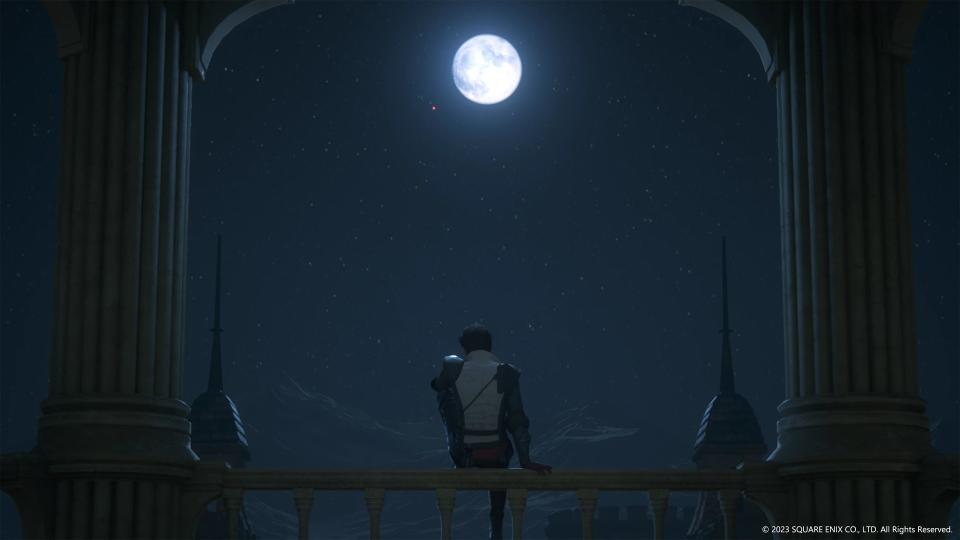
Not only does Final Fantasy 16 bring new ideas to the series, then, it implements them with plenty of polish in a way that makes sense in the world built. More action-focused gameplay sits more comfortably on either side of the button-press sequences of each grand fight, extending the spectacle on show in each cutscene to the gameplay itself. Ideas new to Final Fantasy here aren't new to gaming in general, though few could execute them as cleanly as Square Enix has here.
Despite the time and polish, Final Fantasy 16 remains a gamble. The medieval fantasy is sure to be recognisable to long-term fans keen to see the series return to its roots, though a stripping of RPG elements goes against what plenty desire. You get swifter, more action-focused gameplay that makes the series more approachable to those who haven't played, though whether they do is far from certain.
It's the kind of gamble that Final Fantasy has happily made in the past so that the series may reinvent itself to execute the type of story its creatives want to tell. Time will tell if Final Fantasy 16 pays off, but history certainly supports it.
Final Fantasy 16 was reviewed on PS5, with code provided by the publisher.
